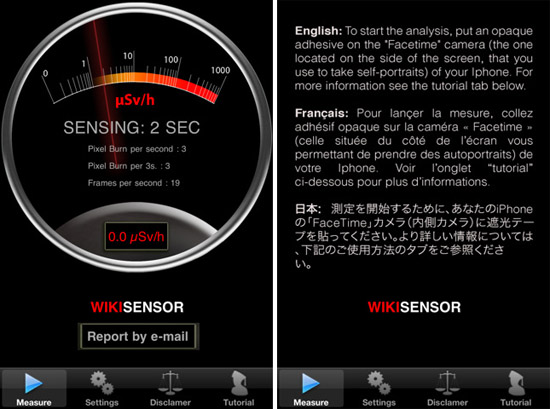For most of us, the threat of radiation poisoning is not something we often think of. However, there is always the possibility that some catastrophic incident will put some of us in danger. Now, I don’t know about you, but I can’t recall the last time I’ve seen my Geiger counter. So how do you tell if the area is unsafe? As it turns out, you can use your iPhone.
Don’t get me wrong, you really shouldn’t trust your phone as a completely reliable source of information regarding radiation levels. However, in a pinch, it can tell you enough to let you know if there is a danger. You see, the CMOS sensor doesn’t just record the light visible to your own eye, it can also capture Gamma and X waves emitted by radioactive sources. With the WikiSensor Dosimeter, you just cover the iPhone’s front camera with black tape, and run the program. The black tape prevents any light from traditional sources from being captured, yet still lets though the waves mentioned above. If these waves are recorded, then the software will let you know, and give you an idea of the risk. If you live in an area where you might be exposed to radiation at some point, this might be worth the $.99 price.
https://www.youtube.com/watch?v=nKH5zU09bV8
https://www.youtube.com/watch?v=xpRnroe4InY





There is no Wikisensor in the iPhone iTunes App store.
What a stupidity! You don't need only a CMOS, you need a scintillator and it's much more complex than that nonsense! Learn science, please. What a fake!
After Fukushima, a Japanese developer did a real iphone geiger counter.
This is a fake geiger becouse the cmos camera is not enable to detect Xray or Gamma Ray. To really detect low and middle level of ionizing radiation, should be used or a real Geiger counter (see: http://www.geigercounter.it), based on a Geiger tube filled with inert gas at low pressure and supply by high voltage from 500 to 1000 volts, or you can use a circuit based on specialized pin diode, but is very expensive.